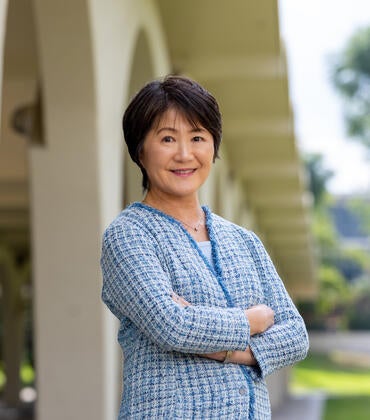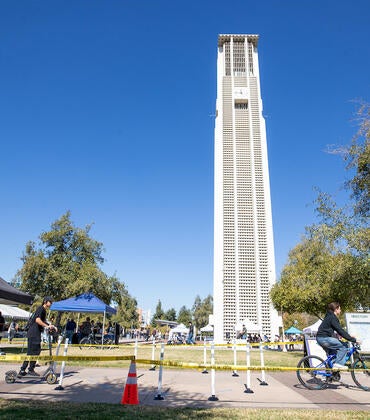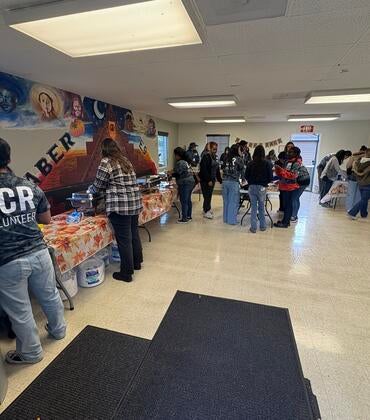A new campus effort aims to bring together UC Riverside’s Asian American and Pacific Islander communities to tackle the shared challenges they face as students, faculty, and staff members, and to explore new opportunities.
In May, which is also Asian American and Pacific Islander Heritage Awareness Month, UCR’s Asian American and Native American Pacific Islander-Serving Institution committee is hosting multiple cultural and community-building events.
The committee is co-chaired by Associate Chancellor Christine Victorino and Mariam Lam, vice chancellor and chief diversity officer, and includes faculty, staff, and student representatives.
The initial focus will be on raising awareness and bringing together the communities so that they can identify the types of issues they face at UCR. The committee hopes to follow up by organizing and providing programming such as targeted recruitment and retention efforts for students, mental health support, leadership development, and mentoring.
“There has been a long-standing desire across campus to build a sense of community among our AAPI employees and students but because they’re such a large and heterogenous group the idea of building a sense of community has been daunting and uncertain,” Victorino said.
Since 2018, UCR has been recognized as an Asian American and Native American Pacific Islander-Serving Institution, or AANAPISI. The committee wants to build on that designation by offering more programs for that population with intentional strategic programming, looking to similar efforts among Black, Indigenous, and Latinx students and employees as a model.
“All of these kinds of efforts and initiatives that you should more readily find for minority serving institutions can create for our students, staff, and faculty a space that is more hospitable to racial diversity where all members uplift one another,” Lam said. “We just want to use the opportunity to educate and make the campus more aware of the collective effect of this shared understanding.”
Some issues that the committee has already heard from the AAPI community that they expect to explore include dealing with the model minority myth or the “bamboo ceiling,” where Asian Pacific Americans may take on less visible labor and leadership roles but do not advance to leadership positions.
The committee is also partnering with Counseling and Psychological Services on events, noting that May is Mental Health Awareness Month and AAPI communities have been historically underrepresented in seeking mental health services.
Lam said it’s also important to note the different experiences and issues within the individual AAPI communities, with some groups facing disparities in income, health outcomes, or representation. For instance, while UCR has a student population of more than 31% Asian American, the Pacific Islander community is less than 1%.
Part of the committee’s focus will be in seeking to increase the Native Hawaiian and Pacific Islander representation among staff, faculty, and students, she said.
David Lo, a distinguished professor of biomedical sciences and a member of the committee, sees the effort as an opportunity to educate the campus. He noted that within the AAPI community there are about 80 groups with their own distinct histories, cultures, and traditions.
“As students learn more about the distinctive communities, they may better understand how to think about identifying with their own Asian American communities,” he said.
Asian Pacific Student Programs, which has played a big role in bringing together student groups, will be involved in student outreach as part of the effort. It’s hosting several events including a food workshop, a speaker series, and cultural performances. The group will also be using social media to feature student profiles that explore what it means to be AAPI on campus.
“Our hope is that we are able to bring various departments across campus together to create meaningful programs and fill any gaps that may have or currently exist in serving AAPI students,” said Billy Caganap, director of Asian Pacific Student Programs and a member of the committee.
The month’s activities will begin with an Asian American and Pacific Islander Heritage Awareness Month lunch for staff and faculty on May 4.
The month’s activities are seen by the committee as the start of ongoing efforts to better serve the AAPI community and create new opportunities.
“There’s so much we can do,” Victorino said. “The first step is coming together, getting to know each other, and just bringing that energy together.”



